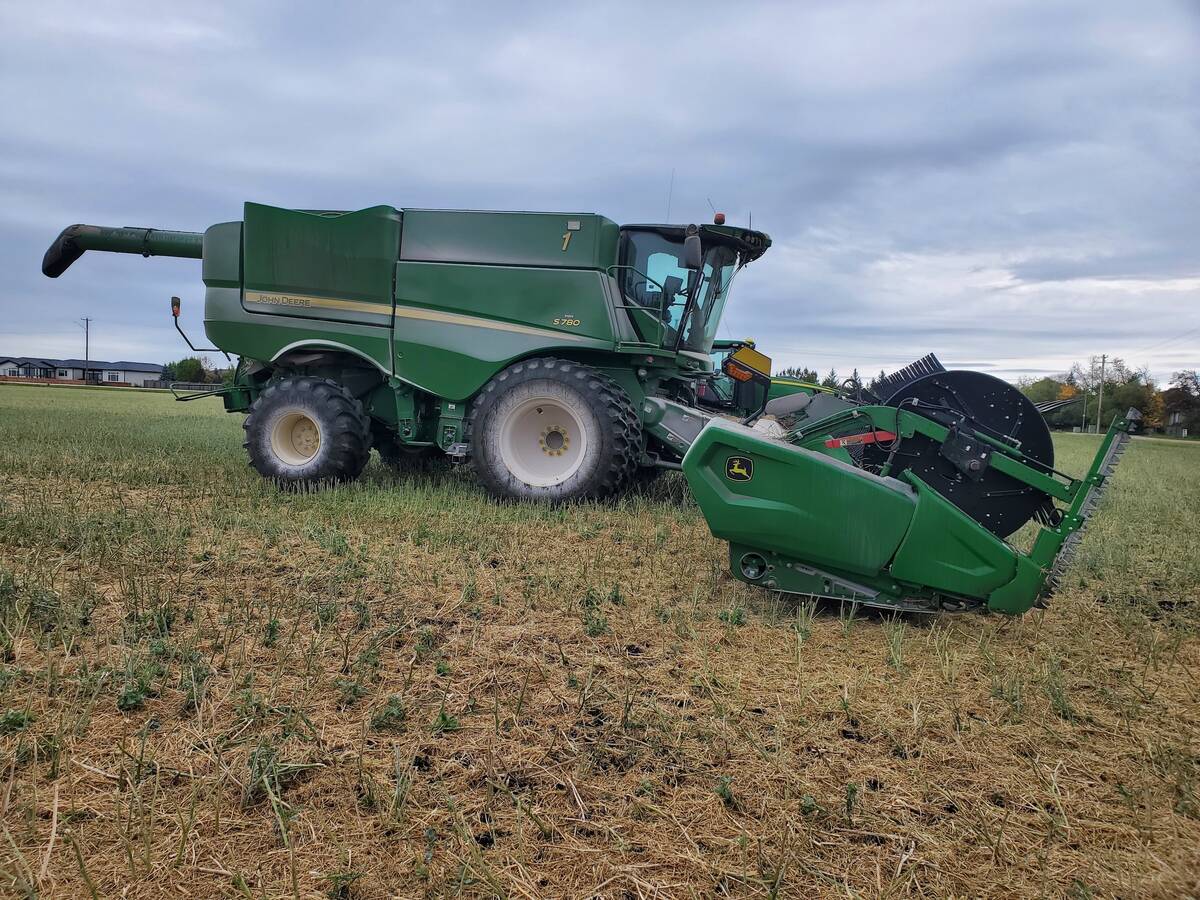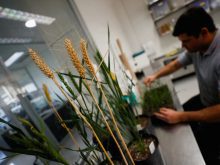Qin Chen has reason to be excited.
The molecular cytogeneticist is leading an effort to give potato growers something they desperately need – a potato variety resistant to both late blight and the Colorado potato beetle.
The key is a wild Mexican potato species that Chen began mining for its valuable genetics less than two years ago.
Chen and his colleagues at Agriculture Canada’s research centre in Lethbridge, Alta., discovered that the species Solanum pinnatisectum has high levels of resistance to late blight disease and the Colorado potato beetle.
Read Also

Powdery mildew can be combine fire risk
Dust from powdery mildew can cause fires in combines.
“I’m very excited,” Chen said.
“In a very short time I have found some very good genetic resistance.”
Late blight and the potato beetle are potato growers’ greatest problems.
It’s estimated that western Canadian potato growers spend up to $25 million a year on fungicide and insecticide to control them.
Chen’s challenge is to isolate and transfer the desired genetics from the wild Mexican potato species into a cultivar suited for Canadian potato growers. He hopes growers will have the new potato variety within five years.
“It is possible, but it will be very challenging.”
It would be a dramatic breakthrough for the potato industry, saving growers millions of dollars in chemical costs. It also could alleviate concerns about reliance on chemicals.
“If we can develop a cultivar that carries resistance to both late blight and the Colorado potato beetle, we can greatly cut down on the use of chemical and fungicide treatments.”
While Alberta and Manitoba potato growers have supported Chen’s research, more money is needed.
According to Lethbridge Research Centre information, Chen has identified two kinds of mechanisms in the wild potato species that provide the high levels of late blight resistance.
The first mechanism is controlled by one or two genes and provides the whole plant with high levels of resistance to the disease.
“You won’t find any disease,” Chen said.
The second mechanism is controlled by three to five genes. It confers a type of resistance called hypersensitivity.
The disease can attach to a potato plant leaf, but it will quickly die before spreading.
The full resistance, controlled by only one or two genes, will be easier to transfer.
However, Chen expects the lifespan of that resistance would be shorter than that provided by the hypersensitivity resistance.
Due to the number of different genes at play, Chen anticipates greater challenges when transferring the hypersensitivity resistance. However, the resulting resistance would last longer.
He wants to find ways to use both kinds of resistance in combination, making their strengths and benefits more enduring.
It now appears one or two genes drive resistance to the Colorado potato beetle.
Chen said researchers around the world are trying to develop potato varieties with resistance to either late blight or the Colorado potato beetle. His research offers the unique hope of a variety that could provide both.
“That would be great,” said Vern Warkentin, executive director for Potato Growers of Alberta.
“Late blight can be pretty devastating.”
The disease is well known for causing the Irish potato famine of the 1840s. Programs that monitor for outbreaks of late blight help control it in Western Canada, but it remains a potentially devastating disease.
















